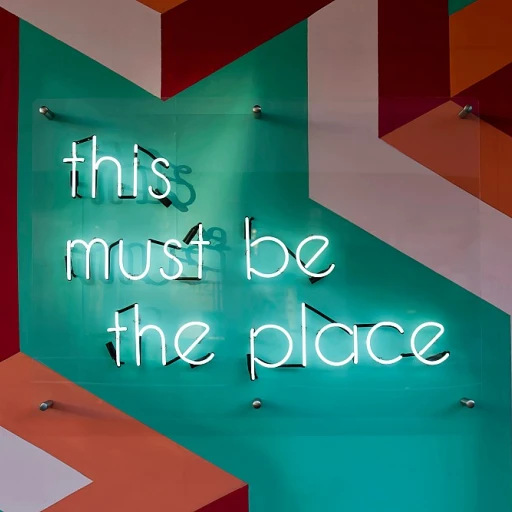Understanding Total Rewards
Decoding the Total Rewards Concept
When we talk about total rewards, we're not just chatting about a paycheck. It's a comprehensive approach that combines compensation, benefits, and other incentives to create a fulfilling work experience. It's like putting together a puzzle where each piece—pay, benefits, work-life balance, and career development—fits perfectly to motivate and retain employees.
The Role of Total Rewards in Employee Engagement
Think of total rewards as the secret sauce that spices up the employee experience. By offering a well-rounded rewards program, companies can boost employee engagement and satisfaction. When employees feel valued through a mix of pay, benefits, and recognition, they're more likely to stay committed to the organization.
Balancing Compensation and Benefits
Striking the right balance between compensation and benefits is crucial. While competitive pay is essential, benefits like health insurance, retirement plans, and work-life balance initiatives play a significant role in attracting and retaining top talent. A well-crafted total rewards strategy ensures that employees feel appreciated and motivated to perform at their best.
Creating a Culture of Recognition
Recognition is a powerful tool in the total rewards arsenal. Acknowledging employees' efforts and achievements can significantly impact morale and productivity. By integrating employee recognition initiatives, companies can foster a positive workplace culture where employees feel seen and appreciated.
Aligning with Business Goals
A successful total rewards strategy aligns with the company's business goals. By understanding what drives the business, organizations can tailor their rewards programs to support these objectives. This alignment ensures that the rewards strategy not only benefits employees but also contributes to the overall success of the company.
Aligning Rewards with Business Goals
Aligning Rewards with What Matters
Crafting a rewards strategy that aligns with your company's goals is like finding the perfect pair of shoes—it needs to fit just right. It’s not just about throwing money at employees; it’s about making sure every dollar spent on compensation benefits serves a purpose. Think of it as investing in a mutual fund rather than a lottery ticket. When your rewards program aligns with business objectives, it’s a win-win. Employees feel valued and motivated, while the company moves closer to its goals. Let’s break it down:- Define Your Goals: Start by identifying what your company aims to achieve. Is it boosting sales, enhancing customer satisfaction, or fostering innovation? Your rewards should echo these targets.
- Connect the Dots: Each reward should directly link to a business goal. For example, if improving customer service is a priority, consider rewards that recognize exceptional service.
- Communicate Clearly: Employees should understand how their performance ties into the company’s success. Transparency is key to ensuring they see the value in the rewards offered.
Story from the Field
Take a leaf out of the book of a mid-sized tech company that revamped its rewards strategy. They realized their previous approach was too generic, lacking connection to their core objectives. By focusing on innovation, they introduced a rewards program that recognized creative solutions and ideas. The result? A noticeable uptick in employee engagement and a surge in innovative projects.Bringing It All Together
Aligning rewards with business goals isn’t just a strategy; it’s about creating a culture where employees feel their contributions matter. When employees see their hard work reflected in the company’s achievements, it boosts their morale and loyalty. This connection not only retains top talent but also attracts new ones, enhancing the overall employee experience. So, next time you think about your company’s rewards program, ask yourself: Does it reflect what we stand for? If the answer is yes, you’re on the right track to creating a thriving work environment where both the business and its people flourish.Customizing Rewards for a Diverse Workforce
Adapting Rewards to Meet Employee Needs
Creating a rewards strategy that resonates with a diverse workforce is like cooking a dish that everyone at the table will love. It's not just about the ingredients; it's about knowing the tastes and preferences of those you're serving. Employees today come from various backgrounds and have different expectations from their employers. Recognizing this diversity is crucial in shaping a rewards program that not only attracts but retains top talent.
Consider the different stages of an employee's career. A young professional might value career development opportunities and learning experiences, while a seasoned employee might prioritize stability and comprehensive compensation benefits. An effective total rewards package should reflect these varied needs and aspirations.
Building a Flexible Rewards Program
Flexibility is key when it comes to designing a rewards program. Think of it like a buffet where employees can pick and choose what suits their lifestyle and career goals. This could mean offering a mix of traditional benefits like health insurance and retirement plans, alongside modern perks such as remote work options, wellness programs, and mental health support. By doing so, you cater to the diverse needs of your workforce, enhancing employee satisfaction and engagement.
Fostering a Culture of Recognition and Inclusion
Beyond pay and benefits, recognition plays a vital role in a successful rewards strategy. Employees who feel valued and appreciated are more likely to stay committed to their organization. Implementing rewards recognition initiatives can significantly boost morale and foster a positive work culture. Regularly acknowledging achievements and contributions can make employees feel seen and appreciated, which is essential for maintaining a motivated workforce.
Incorporating these elements into your rewards strategy not only enhances the employee experience but also aligns with the broader business goals. By customizing your approach to meet the diverse needs of your workforce, you're investing in the long-term success of your organization.
Leveraging Technology in Total Rewards
Bringing Tech into the Rewards Game
In the world of total rewards, technology isn't just a tool—it's a game-changer. Imagine having a rewards program that adapts and evolves with your employees' needs. That's the magic tech brings to the table. Whether it's through seamless integration of compensation benefits or enhancing employee experience, technology helps make the rewards strategy more effective and engaging.
Streamlining with Software
Software solutions can simplify the management of rewards programs. They allow companies to track performance, compensation, and employee satisfaction in real-time. This means businesses can adjust their rewards strategy on the fly, ensuring that employee engagement and satisfaction remain high. For example, using a platform to manage employee rewards and recognition can provide insights into what's working and what's not, helping to align rewards with business goals.
Personalizing Employee Experience
Technology also opens the door to personalization. With data analytics, companies can understand employee preferences and tailor rewards packages to meet diverse needs. This not only boosts employee satisfaction but also helps attract and retain top talent. Think of it as customizing the employee experience, where each rewards program is designed to fit the unique culture and values of the organization.
Fostering a Culture of Recognition
Digital platforms make it easier to implement recognition programs that celebrate employee achievements. Recognition can be as simple as a digital badge or as grand as a company-wide shout-out. Such initiatives foster a culture of appreciation, enhancing work-life balance and employee total engagement. By integrating technology, organizations can ensure that recognition is timely, meaningful, and impactful.
Driving Development Opportunities
Technology isn't just about rewards; it's about development too. Online learning platforms and career development tools can be part of the total compensation package. These resources empower employees to take charge of their career growth, aligning personal development with company objectives. This approach not only improves performance but also strengthens the organization's talent pool.
In conclusion, leveraging technology in total rewards isn't just a trend; it's a necessity. By integrating tech solutions, companies can create a dynamic and responsive rewards strategy that not only meets the needs of their employees but also drives business success.
Measuring the Impact of Total Rewards
Checking the Pulse of Your Rewards Strategy
When it comes to crafting an effective total rewards strategy, knowing if it’s hitting the mark is just as important as setting it up. You’ve put in the work to align rewards with business goals and customized them for your diverse workforce, but how do you know it's all working? Let’s talk about keeping tabs on your total rewards program.
Employee Feedback: The Heartbeat of Satisfaction
Your employees are your best source of information. Regular surveys and feedback sessions can provide insights into their satisfaction with the compensation benefits and recognition they receive. Are they happy with their pay? Do they feel appreciated? Engaged employees are more likely to stick around and perform well. Remember, a happy employee is a productive employee.
Tracking Performance Metrics
Performance metrics are your best friend in this scenario. By analyzing data on employee performance, you can see if your rewards program is encouraging the desired behaviors and outcomes. Look at metrics such as productivity levels, employee turnover, and engagement scores. These numbers can tell you a lot about the effectiveness of your rewards strategy.
Benchmarking Against Industry Standards
Don’t operate in a vacuum. Compare your rewards package against industry standards. Are you offering competitive compensation benefits? Are your development opportunities attractive enough to lure top talent? Keeping an eye on what others in your industry are doing can help you stay competitive and ensure your rewards program is up to par.
Adjusting and Adapting
Your rewards strategy isn’t set in stone. Be ready to make adjustments based on the feedback and data you collect. Maybe your employees value work-life balance more than you thought, or perhaps they’re looking for more career development opportunities. Being flexible and willing to adapt will keep your rewards program effective and your employees satisfied.
Measuring the impact of your total rewards strategy is about staying connected with your employees and being open to change. Keep listening, keep analyzing, and keep evolving to ensure your company remains a place where people want to work.



